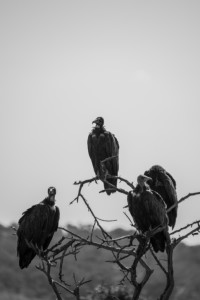Many funerals in the United States have a similar tone and structure. The mood is somber, mourners wear black, the deceased are eulogized, prayers are said and fragrant flowers abound. After the ceremony, friends and family often gather for a meal. In other places in the world, the customs and rituals are quite different.
New Orleans
In New Orleans, jazz funerals are common and inspired by the city’s West African and French heritage. A marching band playing sedate music leads the procession of mourners. After the burial, the tempo changes to upbeat and festive tunes which is frequently accompanied by lively dancing.
South Korea
In recent years, space has been an issue at cemeteries in South Korean, and in 2000 a law was passed that gives family members claim to a grave plot for only 60 years. After that, any remains must be removed. As a result of the law, cremation has become a much more popular option. However, another alternative to ashes is to have remains compressed into brightly colored “death” beads that are then displayed in the homes of the deceased.
Ghana
In Ghana, fantasy coffins are all the rage. People want to be buried in coffins that are symbolic of their profession or something they enjoyed while alive. Examples are car shaped coffins, airplanes for people who love to fly and cameras for photographers. Some individuals prefer fish or animal coffins. They are also sometimes constructed to look like favorite buildings of the deceased. The coffins are typically custom made and very colorful.
Southeast Asia
It is common practice in Southeast Asia for people to be laid to rest in the fields where they worked. Large stone monuments are often constructed as grave markers and can be seen in the middle of pastures where cows and water buffaloes graze. Relatives of the deceased will place counterfeit money under the stones so the dead can purchase what they need for the afterlife.
“Spirit houses” are also common in this part of the world. They are structures placed in the front of all homes, no matter how affluent or poor a family may be. Food and drink are left from time to time in the spirit houses for the dead.
Bali
In Bali, fire is the way to afterlife. Immediately after death, a body is cleaned and placed on a table with food offering placed around it. The body is then put in a mass grave until enough other bodies have accumulated to warrant a cremation ceremony. The bodies are then dug up, washed and put on a decorated float, which is transported throughout the village. The end point of the parade is the main square where the float is lit on fire. After that, a celebration and feast takes place in honor of the departed.
Tibet and Mongolia
For thousands of years, different Buddhist sects in Tibet and Mongolia have practiced a unique tradition known as a sky burial. After death, they believe the spirits of the deceased are reborn and the body becomes irrelevant. In order to bring the spirits back to earth, bodies are cut up and the pieces are laid out on a mountain top where they are exposed to the weather, vultures and other elements.
East Africa
The East African Maasai nomads do not believe in the afterlife; when people die they are gone and there is nothing else. They also think burying bodies in the ground is harmful to the earth. Tribal chiefs are exception to this rule, but everyone else is left outside for predators to consume.
Every religion has its own funeral customs. While they are different than what is considered the norm in the U.S., and may even seem quite foreign, it is how they choose to acknowledge death.


